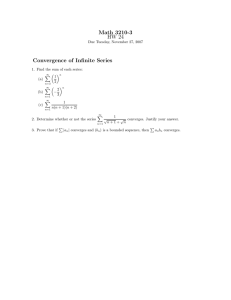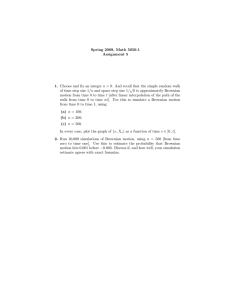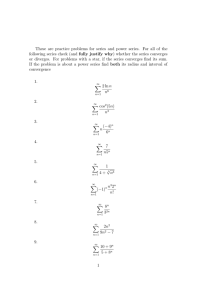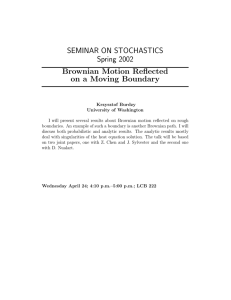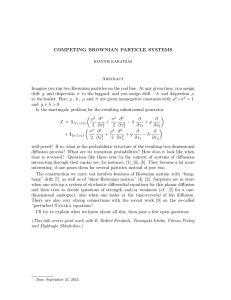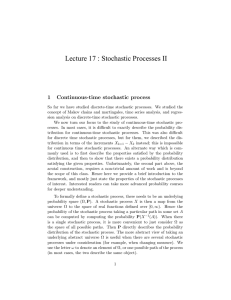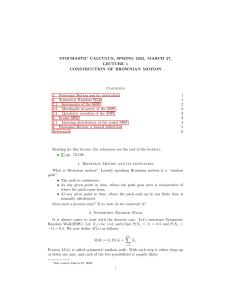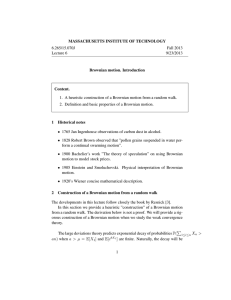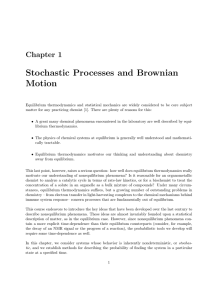Using deterministic dynamical systems to generate stochastic processes
advertisement
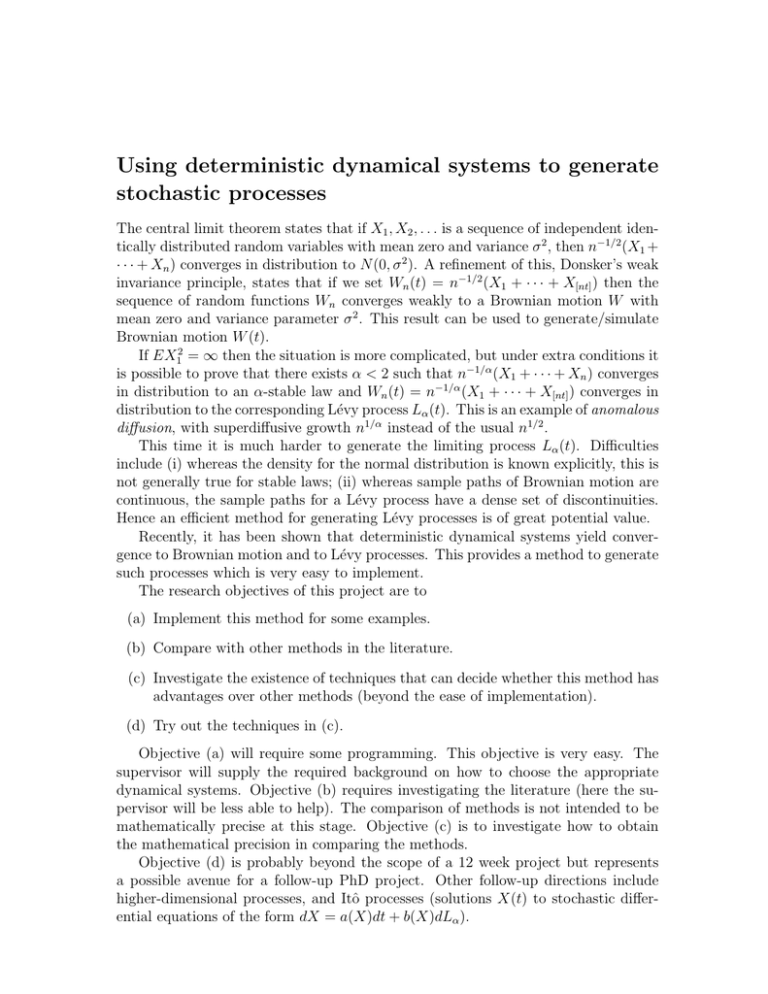
Using deterministic dynamical systems to generate stochastic processes The central limit theorem states that if X1 , X2 , . . . is a sequence of independent identically distributed random variables with mean zero and variance σ 2 , then n−1/2 (X1 + · · · + Xn ) converges in distribution to N (0, σ 2 ). A refinement of this, Donsker’s weak invariance principle, states that if we set Wn (t) = n−1/2 (X1 + · · · + X[nt] ) then the sequence of random functions Wn converges weakly to a Brownian motion W with mean zero and variance parameter σ 2 . This result can be used to generate/simulate Brownian motion W (t). If EX12 = ∞ then the situation is more complicated, but under extra conditions it is possible to prove that there exists α < 2 such that n−1/α (X1 + · · · + Xn ) converges in distribution to an α-stable law and Wn (t) = n−1/α (X1 + · · · + X[nt] ) converges in distribution to the corresponding Lévy process Lα (t). This is an example of anomalous diffusion, with superdiffusive growth n1/α instead of the usual n1/2 . This time it is much harder to generate the limiting process Lα (t). Difficulties include (i) whereas the density for the normal distribution is known explicitly, this is not generally true for stable laws; (ii) whereas sample paths of Brownian motion are continuous, the sample paths for a Lévy process have a dense set of discontinuities. Hence an efficient method for generating Lévy processes is of great potential value. Recently, it has been shown that deterministic dynamical systems yield convergence to Brownian motion and to Lévy processes. This provides a method to generate such processes which is very easy to implement. The research objectives of this project are to (a) Implement this method for some examples. (b) Compare with other methods in the literature. (c) Investigate the existence of techniques that can decide whether this method has advantages over other methods (beyond the ease of implementation). (d) Try out the techniques in (c). Objective (a) will require some programming. This objective is very easy. The supervisor will supply the required background on how to choose the appropriate dynamical systems. Objective (b) requires investigating the literature (here the supervisor will be less able to help). The comparison of methods is not intended to be mathematically precise at this stage. Objective (c) is to investigate how to obtain the mathematical precision in comparing the methods. Objective (d) is probably beyond the scope of a 12 week project but represents a possible avenue for a follow-up PhD project. Other follow-up directions include higher-dimensional processes, and Itô processes (solutions X(t) to stochastic differential equations of the form dX = a(X)dt + b(X)dLα ).

